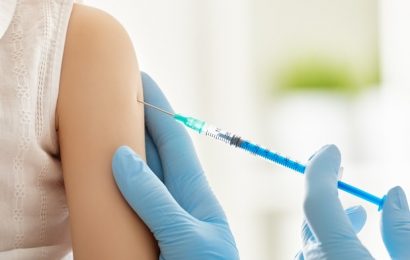An abnormal suppression of the immune system linked to the onset of numerous diseases has been associated with poor functional regeneration of traumatic bone injuries.
Levels of immune cells and proteins circulating in the blood following traumatic injury combined with advanced data analytics could predict whether patients are likely to respond to treatment, said Robert Guldberg, executive director of the Phil and Penny Knight Campus for Accelerating Scientific Impact.
The project — detailed in a paper published online ahead of print in the Proceedings of the National Academy of Sciences — identified myeloid-derived suppressor cells and the immunosuppressive cytokine IL-10 as the strongest predictors of delayed and less effective bone-healing.
That association emerged after a series of experiments in which Guldberg's team ran thousands of data models on hundreds of biomarkers.
Guldberg was the principal investigator on the research, which was supported by the U.S. Armed Forces Institute of Regenerative Medicine and done with colleagues at Georgia Tech and Evolved Analytics.
"Our studies showed that myeloid-derived suppressor cells were consistently elevated in the blood as well as the local tissue in the non-responders to treatment, suggesting that suppression of the immune system may negatively affect musculoskeletal healing," Guldberg said. "That opens up potential novel therapeutic targets to improve patient outcomes following traumatic injuries."
Although standard bone fractures heal 95 percent of the time, complex fractures or trauma that cause damage to bones and surrounding soft tissues such as muscle have higher rates of complications and often require multiple procedures to heal. These non-healing bones are referred to as being in nonunion.
Factors such as age or underlying conditions, Guldberg said, can increase the risk of complications, motivating the need for biomarkers that can predict patient outcomes.
"We were quite intrigued to identify biomarkers that could be measured from the blood that correlated with local healing," he said. "The observation that was most exciting though was that immunosuppressive biomarkers were elevated as early as one week after treatment, well before radiographs could be used to assess the progress of healing."
A similar dysregulated immune response is seen in early stages of infections, cancer and other diseases. Myeloid-derived suppressor cells normally activate along with other cell groups that respond to injury or a pathological condition. In turn, various proteins, such as the cytokines identified in the new paper, activate to control inflammation. Under normal conditions following injury, these compensatory responses return to normal levels.
When that compensation fails to occur, Guldberg said, patients can enter a state of chronic inflammation and sustained immune suppression that appear to be associated with poor treatment outcomes.
Under a recently awarded 2.5 million, five-year grant from the National Institutes of Health, Guldberg will lead a team to further characterize and confirm the immune biomarkers in anticipation of a possible human clinical trial and test a new immunomodulation treatment strategy.
University of Oregon
Cheng, A., et al. (2021) Early systemic immune biomarkers predict bone regeneration after trauma. PNAS. doi.org/10.1073/pnas.2017889118.
Posted in: Medical Science News | Medical Research News
Tags: Blood, Bone, Cancer, Cell, Chronic, Clinical Trial, Cytokine, Cytokines, Immune Response, Immune System, Inflammation, Medicine, Muscle, Musculoskeletal, Research, students, Trauma
Source: Read Full Article


